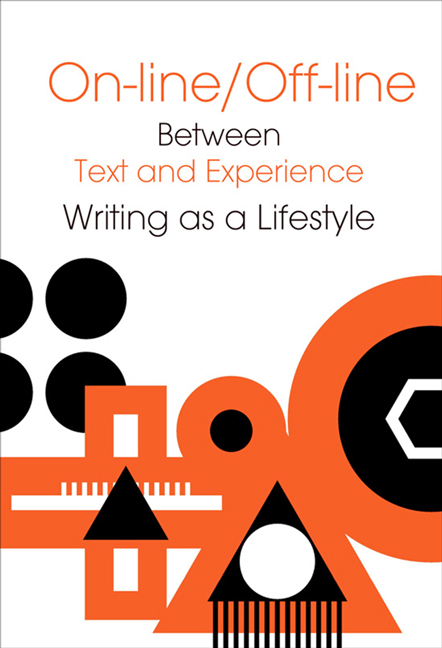Book contents
- Frontmatter
- Contents
- Editors’ Introduction
- ON-LINE/ OFF-LINE
- Literate Existence in the Digital Space. Contemporary Traces of Identity
- Text, Writing, School in Anthropological Perspective
- The Practice of Writing Fan Fiction: A Fan Fiction Writer's Tutorial
- I Write. You Write. They Write. The Literary Works of Fandom as a Factor in Integrating the Community
- Approaches Towards Shame in Contemporary Polish Literature
- People You May Know: Homosexual Men's Identity in the Time of Social Networking Services
- Contemporary Polish Essays: In Search of the Aura of Paintings and Photographs
- The Hybrid Work of Art as Experience
- Reincarnations of the Word: Media, Genres, Practices
- LITERATURE AND CONVERGENCE
Literate Existence in the Digital Space. Contemporary Traces of Identity
from ON-LINE/ OFF-LINE
Published online by Cambridge University Press: 12 January 2018
- Frontmatter
- Contents
- Editors’ Introduction
- ON-LINE/ OFF-LINE
- Literate Existence in the Digital Space. Contemporary Traces of Identity
- Text, Writing, School in Anthropological Perspective
- The Practice of Writing Fan Fiction: A Fan Fiction Writer's Tutorial
- I Write. You Write. They Write. The Literary Works of Fandom as a Factor in Integrating the Community
- Approaches Towards Shame in Contemporary Polish Literature
- People You May Know: Homosexual Men's Identity in the Time of Social Networking Services
- Contemporary Polish Essays: In Search of the Aura of Paintings and Photographs
- The Hybrid Work of Art as Experience
- Reincarnations of the Word: Media, Genres, Practices
- LITERATURE AND CONVERGENCE
Summary
Abstract
The aim of this study is to present how the development of writing technology influences writing itself. In this paper the analysis is focused on mechanisms of reinterpretation of writing and reading in digital space, in other words, the change in experience of text. To summarize, modern media techniques make reading become writing, when writing be-comes clicking (an action taken upon the texture), and clicking becomes the experience of text. Another goal is to present a special role of the texture as the tool of text's creation as well as the place of cohesion. The importance of semiotic tissue of digital text, especially in the case of digital art, is visible in the formation of intratextual relations. These relations are created in the process of working one element of texture onto another, which allow them to play an important role in the creation of textual meaning.
Key words: identity, digital space, experience of text, textual meaning, intratextual relations
Reading is writing. Writing is clicking
The topic of writing as a way of living in relation to the digital culture evoke, first of all, problems connected with the prevalence of commu-nication in the public domain, globalization of the individual record, the changing relation between literacy and orality – shaping of the new forms of linguistic existence as well as the development of new text genres.
The change in communicational behavior in the virtual world, trans-gression that takes place in text-user relation, inseparability of transciver activities – all of it significantly influence the existence of text. As a result, reading becomes writing (an action), writing becomes clicking, and click-ing becomes the way of experiencing text through the texture.
Within digital culture the reception of text is a corporeal experience already at the perception level. There raises the question if clicking as a technical action, marking, selection of textual elements on the screen of computer, e.g., during reception of a hypertext novel, can be recognized as an action analogous to page turning during the reception of a novel pre-served in the medium of a traditional book? At first glance, it may appear so. The opening of a book and page turning are undoubtedly technical conditions of reading.
- Type
- Chapter
- Information
- On-line/Off-lineBetween Text and Experience: Writing as a Lifestyle, pp. 19 - 34Publisher: Jagiellonian University PressPrint publication year: 2016



